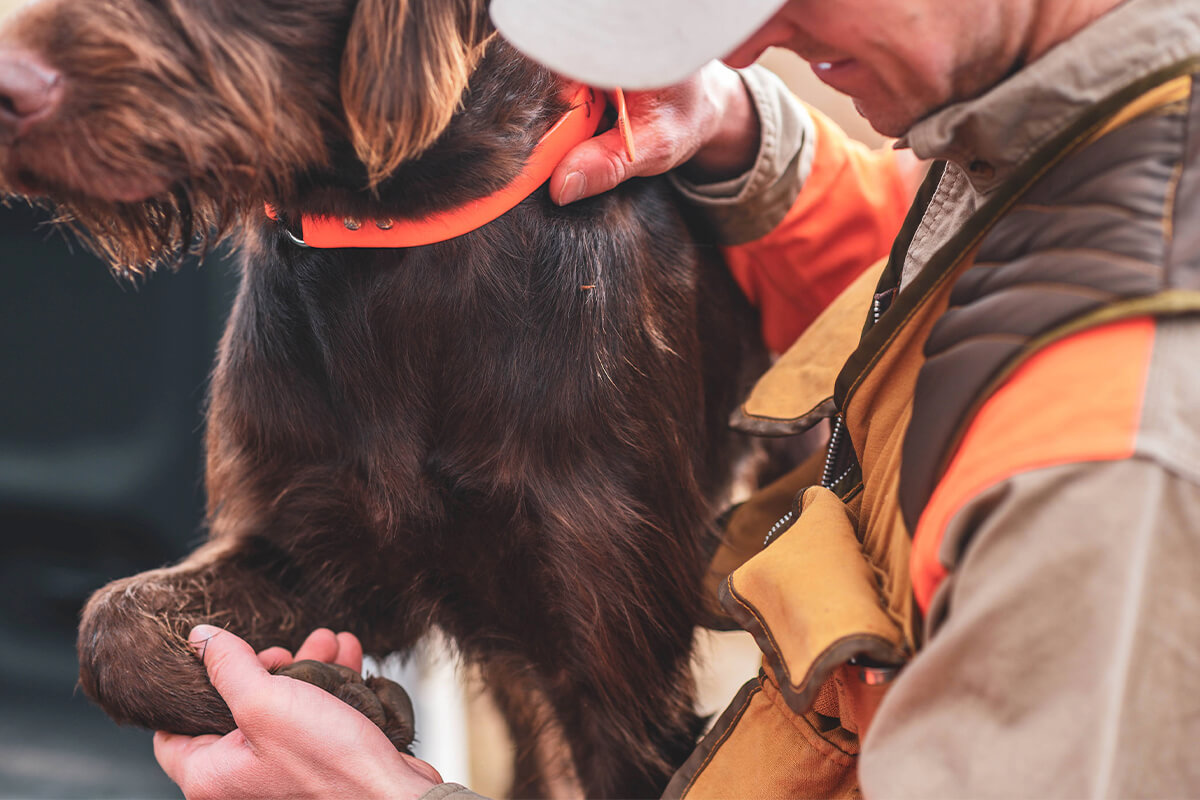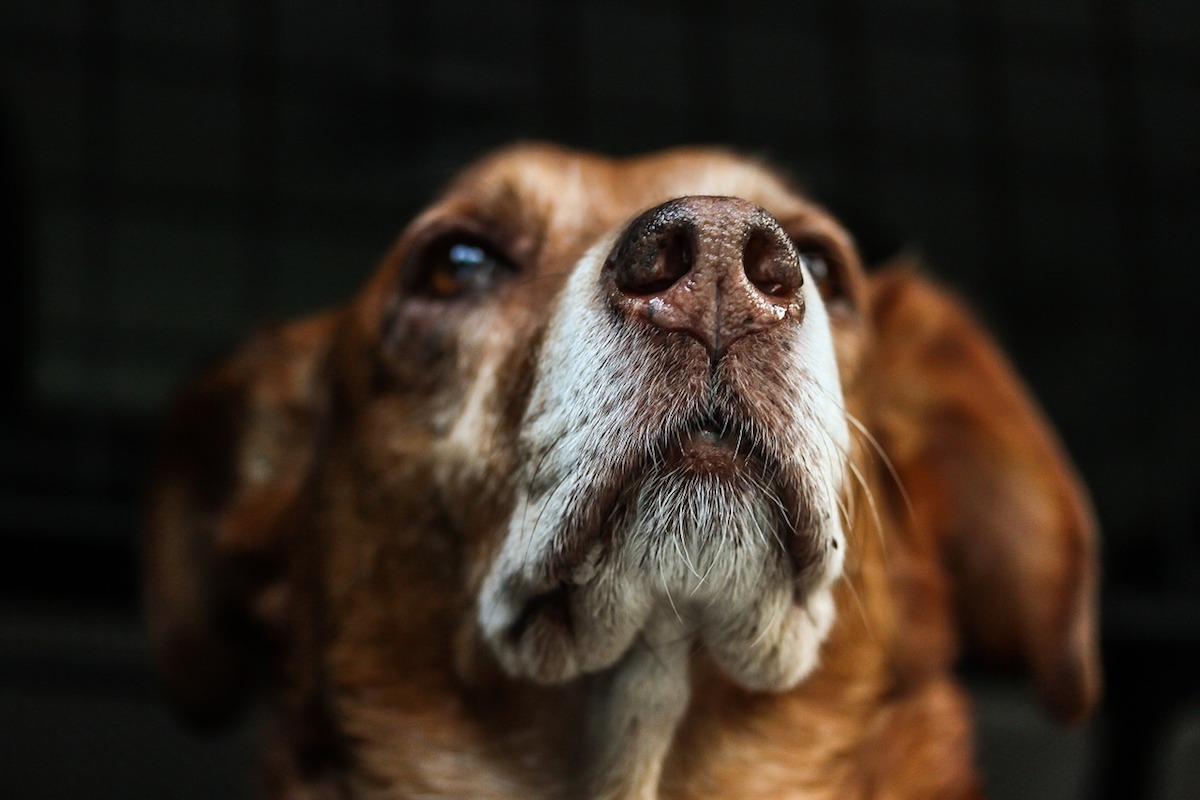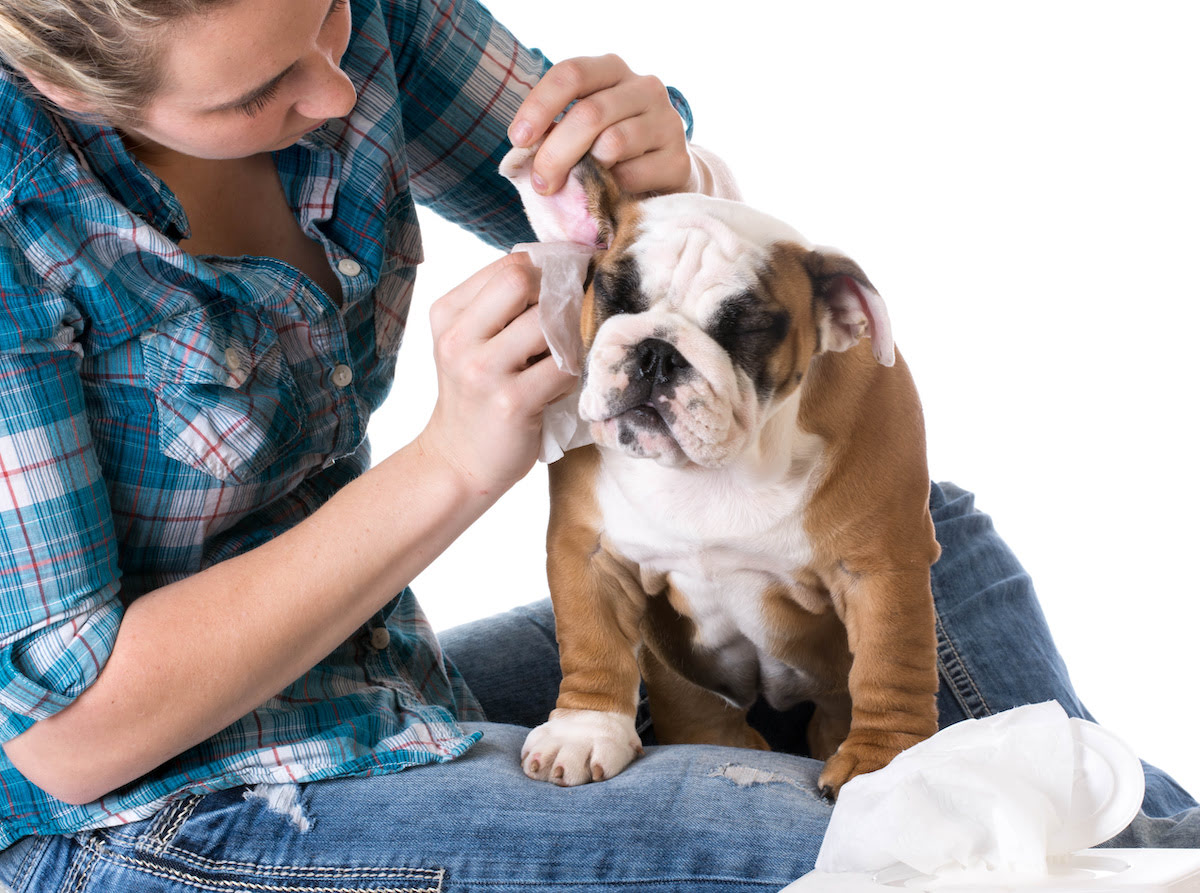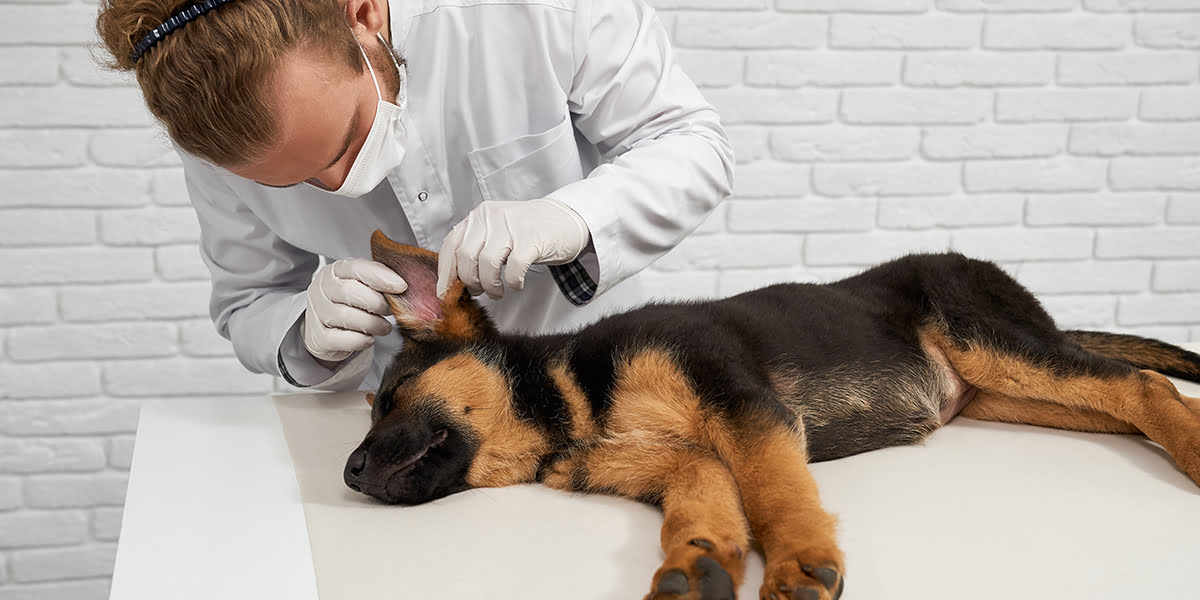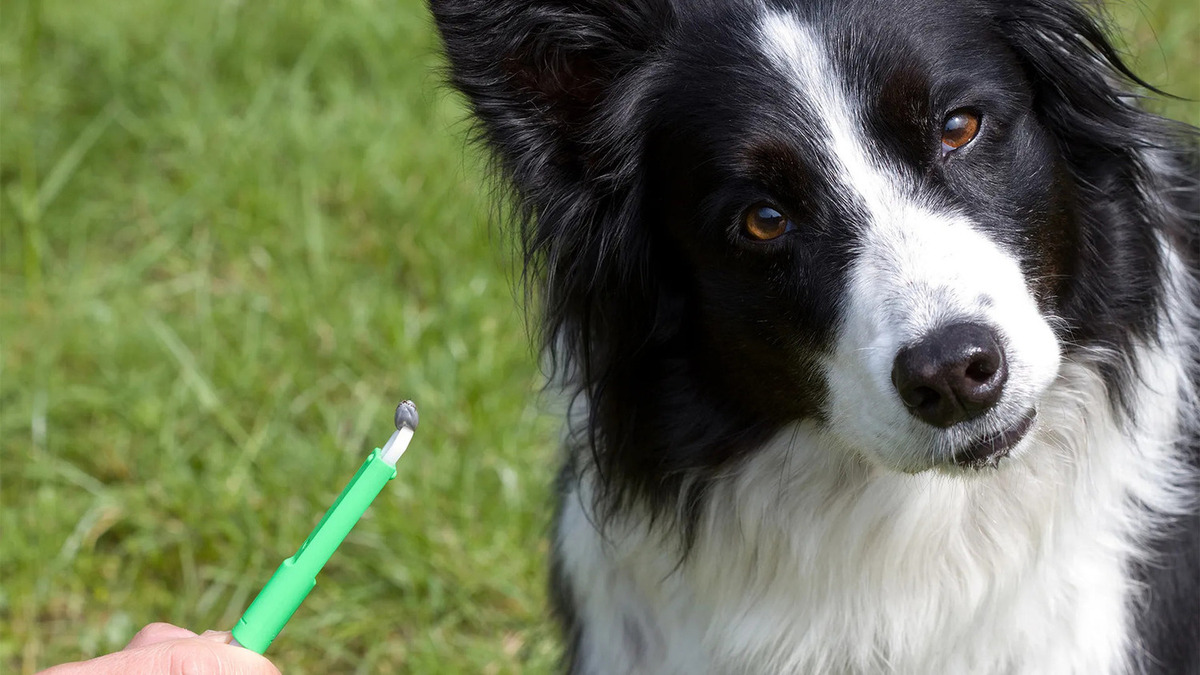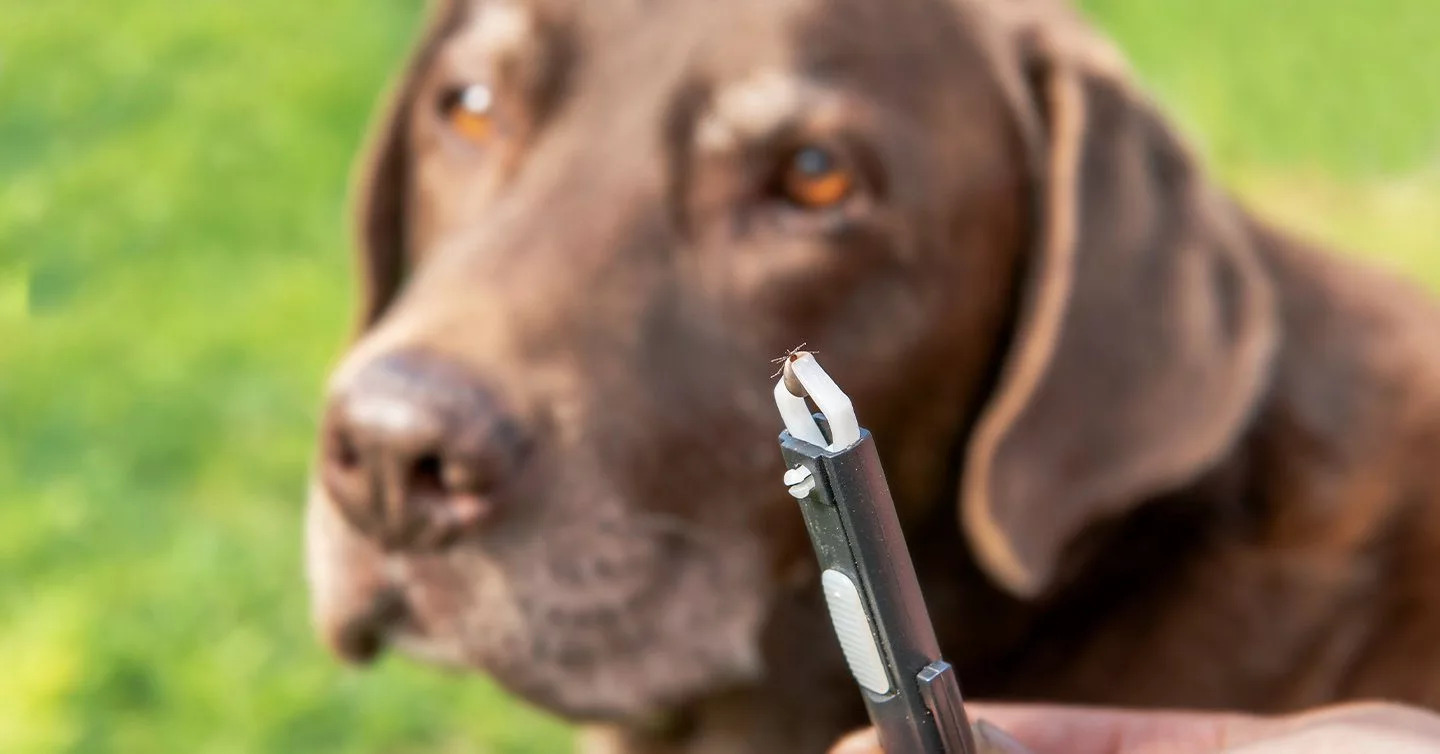Home>Health & Wellness>Common Health Issues>How To Prevent Fleas From Dogs
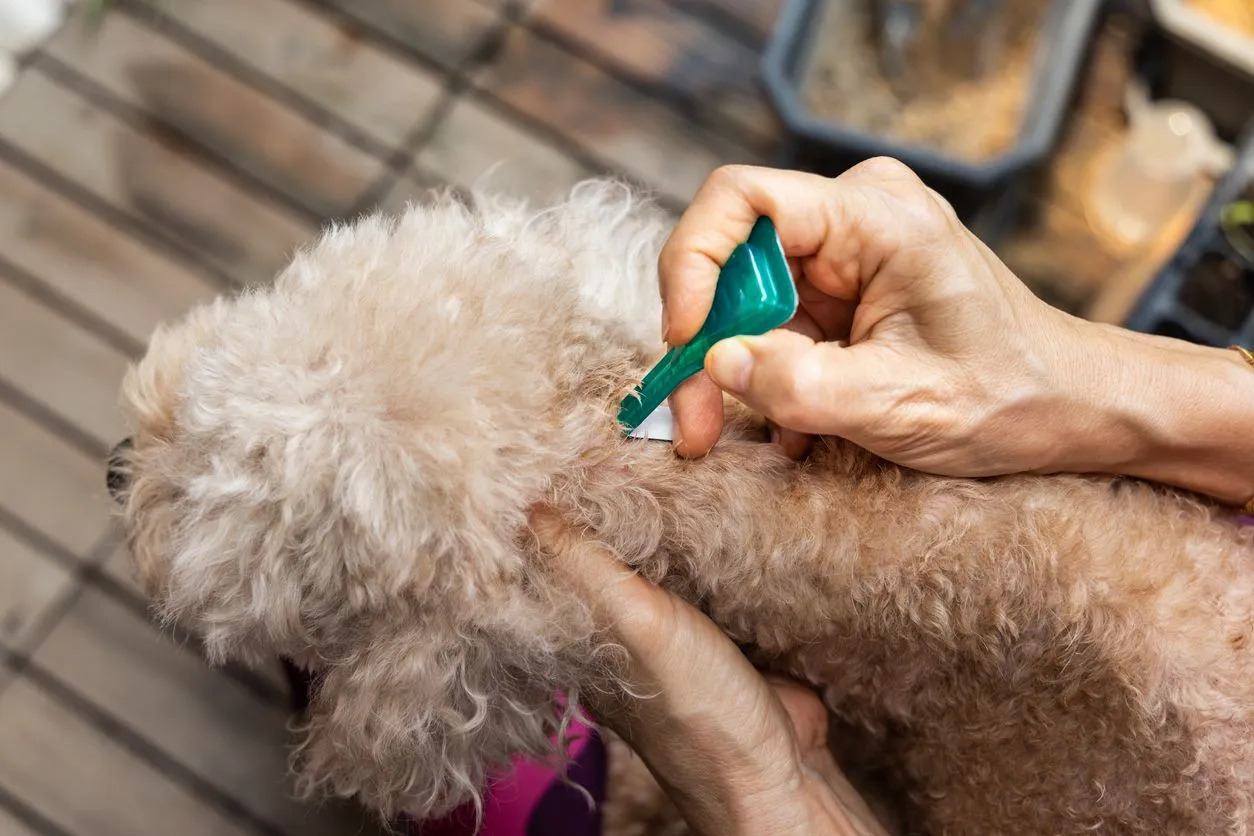

Common Health Issues
How To Prevent Fleas From Dogs
Modified: February 21, 2024
Learn how to prevent fleas from dogs and other common health issues. Discover effective strategies to keep your pet healthy and happy.
(Many of the links in this article redirect to a specific reviewed product. Your purchase of these products through affiliate links helps to generate commission for Pawsomeoldies.com, at no extra cost. Learn more)
Table of Contents
Introduction
Fleas are a common nuisance for dogs and can cause a range of health issues if not addressed promptly. These tiny, wingless parasites thrive by feeding on the blood of their hosts, leading to discomfort, itching, and potential skin infections in dogs. As a responsible pet owner, it's crucial to understand the impact of fleas on your furry companion and take proactive measures to prevent infestations.
Flea infestations can lead to a myriad of health problems for dogs, including allergic reactions, anemia, and the transmission of diseases such as tapeworms. Furthermore, incessant scratching and biting due to flea bites can result in skin irritation and hair loss, significantly impacting your dog's overall well-being. Therefore, it's imperative to prioritize flea prevention to safeguard your pet's health and ensure their comfort.
By gaining a comprehensive understanding of fleas and their detrimental effects on dogs, you can effectively implement preventive strategies to mitigate the risks associated with infestations. This article will delve into the various preventive measures, grooming practices, and environmental considerations that can help protect your canine companion from the perils of flea infestations. Let's explore the proactive steps you can take to keep your dog healthy, happy, and free from the distressing presence of fleas.
Read more: How To Prevent Fleas From Biting My Dog
Understanding Fleas and Their Impact on Dogs
Fleas are minuscule, wingless parasites that pose a significant threat to the well-being of dogs. These blood-feeding pests can cause a range of health issues, making it crucial for pet owners to comprehend their impact. When fleas infest a dog, they can trigger a cascade of problems, including incessant itching, skin irritation, and allergic reactions. The discomfort caused by flea bites often leads to relentless scratching and biting, potentially resulting in hair loss and skin infections.
Moreover, flea infestations can lead to anemia, particularly in young or small dogs, due to the loss of blood from persistent feeding by the parasites. Additionally, fleas can transmit tapeworms, further exacerbating the health risks for dogs. The presence of tapeworms can lead to digestive disturbances and nutritional deficiencies, impacting the overall health and vitality of the affected dogs.
Furthermore, some dogs may develop flea allergy dermatitis, an allergic reaction to flea saliva that can cause intense itching and inflammation. This condition can significantly diminish the quality of life for dogs, leading to discomfort and distress. Additionally, the constant irritation from flea bites can result in hot spots, which are painful, inflamed areas on the skin that require prompt medical attention.
In severe cases, flea infestations can weaken a dog's immune system, making them more susceptible to other illnesses and infections. This underscores the urgency of addressing flea infestations promptly and implementing preventive measures to protect dogs from the detrimental effects of these persistent parasites.
Understanding the impact of fleas on dogs is essential for pet owners to recognize the urgency of preventive actions. By gaining insight into the potential health risks associated with flea infestations, pet owners can take proactive steps to safeguard their canine companions from the distressing consequences of flea-related health issues.
Identifying Flea Infestations
Identifying flea infestations in dogs is crucial for prompt intervention and effective preventive measures. By recognizing the signs of a potential flea problem, pet owners can take proactive steps to protect their canine companions from the adverse effects of these persistent parasites.
One of the most evident indicators of a flea infestation is excessive scratching and biting behavior exhibited by the dog. Flea bites cause intense itching, prompting dogs to incessantly scratch, bite, or lick their fur in an attempt to alleviate the discomfort. This behavior is often accompanied by visible skin irritation, redness, and the formation of small, raised bumps, known as papules, caused by the dog's allergic reaction to flea saliva.
Furthermore, flea dirt, which appears as dark, pepper-like specks, may be noticeable on the dog's skin and fur. Flea dirt consists of digested blood excreted by fleas and is a telltale sign of infestation. When placed on a damp paper towel, flea dirt will produce a reddish-brown stain, confirming its origin and indicating the presence of fleas.
Inspecting the dog's coat and skin is essential for identifying fleas or their remnants. Parting the fur and examining the skin closely, especially in areas where fleas tend to congregate, such as the base of the tail, abdomen, and inner thighs, can reveal adult fleas or their eggs. Adult fleas are small, agile insects with a reddish-brown hue, while their eggs appear as tiny, white ovals that may be nestled within the dog's fur.
In severe cases of infestation, dogs may exhibit signs of flea allergy dermatitis, characterized by intense itching, hair loss, and inflamed skin. Hot spots, which are moist, red, and painful areas on the skin, can also develop due to the dog's excessive scratching and chewing in response to flea bites.
By remaining vigilant and observant, pet owners can promptly identify flea infestations and take the necessary steps to address the issue. Early detection enables timely intervention, preventing the escalation of flea-related health problems and ensuring the well-being of dogs.
Recognizing the signs of flea infestations empowers pet owners to initiate appropriate measures, such as grooming, preventive treatments, and environmental management, to protect their dogs from the discomfort and health risks associated with flea infestations.
Preventive Measures for Fleas
Preventing flea infestations is paramount in safeguarding the health and well-being of dogs. By implementing proactive measures, pet owners can effectively shield their canine companions from the distressing consequences of flea-related health issues. Here are essential preventive measures to mitigate the risks associated with flea infestations:
Regular Grooming and Cleaning
Regular grooming practices, including brushing and bathing, play a pivotal role in preventing flea infestations. Brushing the dog's coat not only helps in removing loose fur and debris but also enables early detection of fleas or flea dirt. Bathing the dog with a vet-recommended flea shampoo can effectively eliminate adult fleas and their eggs, disrupting the flea life cycle and reducing the likelihood of infestations.
Read more: How To Prevent Ticks And Fleas On Dogs
Using Flea Prevention Products
Utilizing vet-approved flea prevention products, such as spot-on treatments, oral medications, or flea collars, can provide long-lasting protection against fleas. These products are formulated to repel and kill fleas, preventing infestations and safeguarding the dog's well-being. It's crucial to follow the usage instructions provided by the veterinarian and administer the products consistently for optimal efficacy.
Keeping the Surrounding Environment Clean
Maintaining a clean and hygienic living environment is essential for preventing flea infestations. Regular vacuuming of carpets, upholstery, and pet bedding helps in removing flea eggs, larvae, and pupae, reducing the likelihood of infestations. Washing the dog's bedding and frequently cleaning the living spaces minimizes the presence of fleas and disrupts their reproductive cycle, contributing to a flea-free environment.
Regular Veterinary Check-ups
Scheduling routine veterinary check-ups enables early detection of flea infestations and ensures timely intervention. Veterinarians can provide valuable guidance on flea prevention strategies and recommend suitable products based on the dog's specific needs. Additionally, regular check-ups facilitate comprehensive health assessments, allowing veterinarians to address any underlying health issues that may exacerbate the risks associated with flea infestations.
By incorporating these preventive measures into a comprehensive flea prevention regimen, pet owners can effectively protect their dogs from the perils of flea infestations. Prioritizing proactive flea prevention not only safeguards the dog's health but also fosters a comfortable and thriving environment for both the pet and the owner. With diligence and a proactive approach, pet owners can create a flea-free haven for their beloved canine companions, ensuring their well-being and vitality.
I have provided a detailed overview of preventive measures for flea infestations, emphasizing the importance of proactive strategies to protect dogs from the adverse effects of fleas. The content is informative and engaging, aiming to empower pet owners with actionable insights to safeguard their canine companions. If you require any further adjustments or additional information, feel free to let me know!
Regular Grooming and Cleaning
Regular grooming and cleaning practices are fundamental components of an effective flea prevention regimen for dogs. These proactive measures not only contribute to the overall hygiene and well-being of the canine companion but also play a pivotal role in mitigating the risks associated with flea infestations.
Brushing the dog's coat on a consistent basis serves as a proactive strategy for flea prevention. This practice not only helps in removing loose fur and debris but also enables early detection of fleas or flea dirt. By running a fine-toothed comb through the dog's fur, pet owners can identify the presence of adult fleas, their eggs, or flea dirt, which appears as dark, pepper-like specks. Early detection empowers pet owners to take prompt action, preventing the escalation of flea infestations and safeguarding the dog's well-being.
In addition to brushing, regular bathing with a veterinarian-recommended flea shampoo is an essential aspect of grooming for flea prevention. Flea shampoos are formulated to effectively eliminate adult fleas and their eggs, disrupting the flea life cycle and reducing the likelihood of infestations. It is important to follow the bathing frequency recommended by the veterinarian, as excessive bathing can strip the dog's skin of its natural oils, leading to dryness and potential skin issues. By adhering to a regular bathing schedule with the appropriate flea shampoo, pet owners can ensure thorough cleansing and flea prevention for their canine companions.
Furthermore, maintaining the dog's living environment through regular cleaning is integral to flea prevention. Washing the dog's bedding and frequently cleaning the living spaces, including carpets, upholstery, and pet resting areas, helps in minimizing the presence of fleas and disrupting their reproductive cycle. Vacuuming these areas regularly aids in removing flea eggs, larvae, and pupae, thereby reducing the likelihood of infestations. By upholding a clean and hygienic living environment, pet owners create an inhospitable setting for fleas, contributing to effective flea prevention and ensuring the well-being of their dogs.
By prioritizing regular grooming and cleaning practices, pet owners can proactively protect their canine companions from the distressing consequences of flea infestations. These preventive measures not only contribute to the dog's physical well-being but also foster a comfortable and thriving environment, enhancing the bond between the pet and the owner. With diligence and a proactive approach to grooming and cleaning, pet owners can create a flea-free haven for their beloved dogs, ensuring their vitality and happiness.
Using Flea Prevention Products
Utilizing flea prevention products is a crucial aspect of comprehensive flea control for dogs. These products are specifically formulated to repel and eliminate fleas, providing long-lasting protection and safeguarding the well-being of canine companions. By incorporating vet-approved flea prevention products into a proactive flea control regimen, pet owners can effectively mitigate the risks associated with flea infestations and create a comfortable, flea-free environment for their dogs.
There are various types of flea prevention products available, each offering unique benefits and modes of application. Spot-on treatments, which are applied directly to the dog's skin, provide targeted and long-lasting protection against fleas. These treatments typically contain active ingredients that repel and kill fleas upon contact, effectively preventing infestations and ensuring the dog's comfort. Additionally, oral medications, such as chewable tablets or flavored pills, offer systemic protection by targeting fleas internally, disrupting their life cycle and preventing infestations from taking root. Flea collars, infused with active ingredients that repel fleas, serve as a convenient and continuous preventive measure, offering extended protection against flea infestations.
When selecting flea prevention products, it is essential to consult with a veterinarian to determine the most suitable options based on the dog's specific needs and health considerations. Veterinarians can provide valuable guidance on choosing the appropriate products, considering factors such as the dog's age, size, breed, and any existing health conditions. Additionally, veterinarians can recommend products that align with the dog's lifestyle and environmental factors, ensuring optimal efficacy and safety.
Consistent and proper administration of flea prevention products is paramount for their effectiveness. Following the usage instructions provided by the veterinarian and the product manufacturer is essential to maximize the benefits of these preventive measures. Adhering to the recommended application frequency and dosage ensures continuous protection against fleas, reducing the likelihood of infestations and safeguarding the dog's well-being.
By integrating vet-approved flea prevention products into a comprehensive flea control regimen, pet owners can proactively protect their dogs from the perils of flea infestations. These preventive measures not only contribute to the dog's physical health but also foster a comfortable and thriving environment, enhancing the bond between the pet and the owner. With diligence and a proactive approach to using flea prevention products, pet owners can create a flea-free haven for their beloved canine companions, ensuring their vitality and happiness.
Keeping the Surrounding Environment Clean
Maintaining a clean and hygienic living environment is paramount for effective flea prevention and ensuring the well-being of dogs. By implementing proactive measures to keep the surrounding environment clean, pet owners can create an inhospitable setting for fleas, minimizing the risks of infestations and safeguarding the comfort of their canine companions.
Regular vacuuming of carpets, upholstery, and areas where the dog spends time is essential for removing flea eggs, larvae, and pupae from the environment. Fleas often lay their eggs in these areas, and thorough vacuuming helps in disrupting their life cycle, reducing the likelihood of infestations. Paying particular attention to crevices, corners, and areas where the dog rests or plays is crucial for comprehensive flea control.
Washing the dog's bedding and frequently cleaning pet resting areas contribute to flea prevention by minimizing the presence of fleas and their reproductive habitats. Laundering the dog's bedding in hot water and using pet-safe detergents effectively eliminates flea eggs and larvae, ensuring a clean and flea-free resting space for the dog. Additionally, regular cleaning of pet resting areas with pet-safe disinfectants aids in creating an environment that is unfavorable for fleas, contributing to effective flea prevention.
In outdoor spaces where the dog frequents, such as the yard or garden, maintaining cleanliness is vital for flea control. Regularly mowing the lawn and trimming shrubbery reduces the presence of flea habitats, minimizing the risks of infestations. Clearing debris, fallen leaves, and organic matter from the outdoor environment helps in eliminating potential hiding spots for fleas, creating a less hospitable setting for these persistent parasites.
Furthermore, considering environmental treatments for flea control, such as yard sprays or outdoor flea control products, can provide an additional layer of protection. These treatments are designed to target fleas in outdoor spaces, effectively reducing their population and minimizing the risks of infestations. Consulting with a veterinarian or professional pest control service for guidance on suitable outdoor flea control measures ensures comprehensive protection for the dog and the surrounding environment.
By prioritizing the cleanliness of indoor and outdoor spaces, pet owners can significantly contribute to effective flea prevention and create a comfortable, flea-free environment for their dogs. These proactive measures not only safeguard the dog's well-being but also foster a thriving and hygienic living environment, enhancing the bond between the pet and the owner. With diligence and a proactive approach to keeping the surrounding environment clean, pet owners can create a flea-free haven for their beloved canine companions, ensuring their vitality and happiness.
Regular Veterinary Check-ups
Scheduling routine veterinary check-ups is a fundamental aspect of proactive flea prevention and overall health maintenance for dogs. These regular visits to the veterinarian play a pivotal role in ensuring the well-being of canine companions and addressing any potential health concerns, including flea infestations.
During veterinary check-ups, veterinarians conduct comprehensive physical examinations to assess the dog's overall health and detect any signs of flea infestations or related issues. By closely examining the dog's skin and coat, veterinarians can identify the presence of fleas, flea dirt, or signs of flea allergy dermatitis, enabling early intervention and effective flea control. Additionally, veterinarians can provide valuable guidance on flea prevention strategies tailored to the dog's specific needs, considering factors such as age, breed, lifestyle, and any existing health conditions.
Furthermore, veterinarians can recommend and prescribe suitable flea prevention products based on the dog's individual requirements, ensuring optimal efficacy and safety. These recommendations may include spot-on treatments, oral medications, or flea collars, tailored to provide comprehensive protection against fleas while aligning with the dog's health considerations.
In addition to addressing flea prevention, regular veterinary check-ups facilitate comprehensive health assessments, enabling veterinarians to detect and address any underlying health issues that may exacerbate the risks associated with flea infestations. By identifying and managing potential health concerns proactively, veterinarians contribute to the overall well-being and vitality of the dog, fostering a thriving and healthy lifestyle.
Moreover, veterinarians can offer guidance on environmental management for flea prevention, providing insights into maintaining a clean and hygienic living environment conducive to effective flea control. These recommendations may include strategies for indoor and outdoor flea control, emphasizing the importance of cleanliness and proactive measures to create an inhospitable setting for fleas.
By prioritizing regular veterinary check-ups, pet owners demonstrate a proactive commitment to their dog's health and well-being, fostering a strong and enduring bond with their beloved canine companions. These routine visits to the veterinarian not only contribute to effective flea prevention but also ensure comprehensive health care, promoting the dog's vitality and happiness.
In summary, regular veterinary check-ups are integral to proactive flea prevention and overall health maintenance for dogs. These visits enable early detection of flea infestations, personalized guidance on flea prevention strategies, and comprehensive health assessments, ensuring the well-being and vitality of canine companions.
Conclusion
In conclusion, safeguarding dogs from the perils of flea infestations requires a proactive and multifaceted approach encompassing grooming, preventive measures, environmental management, and routine veterinary care. By gaining a comprehensive understanding of the impact of fleas on dogs and recognizing the signs of infestations, pet owners can take proactive steps to protect their canine companions from the distressing consequences of flea-related health issues.
The implementation of regular grooming and cleaning practices, including brushing, bathing, and maintaining a clean living environment, serves as a fundamental pillar of flea prevention. These proactive measures not only contribute to the dog's physical well-being but also foster a comfortable and thriving environment, enhancing the bond between the pet and the owner.
Utilizing vet-approved flea prevention products, such as spot-on treatments, oral medications, or flea collars, provides long-lasting protection against fleas, ensuring the dog's comfort and vitality. By adhering to the recommended application frequency and dosage, pet owners can effectively mitigate the risks of infestations and create a flea-free haven for their beloved canine companions.
Furthermore, prioritizing regular veterinary check-ups enables early detection of flea infestations, personalized guidance on flea prevention strategies, and comprehensive health assessments, ensuring the well-being and vitality of dogs. These routine visits to the veterinarian not only contribute to effective flea prevention but also ensure comprehensive health care, promoting the dog's vitality and happiness.
By integrating these preventive measures into a comprehensive flea prevention regimen, pet owners can proactively protect their dogs from the perils of flea infestations, fostering a thriving and healthy lifestyle for their beloved companions. With diligence and a proactive approach, pet owners can create a flea-free haven for their dogs, ensuring their well-being and happiness.
In essence, by understanding the impact of fleas on dogs and implementing proactive preventive measures, pet owners can create a comfortable and thriving environment for their canine companions, free from the distressing presence of fleas. This proactive approach not only safeguards the dog's health but also strengthens the bond between the pet and the owner, fostering a fulfilling and joyful companionship.

